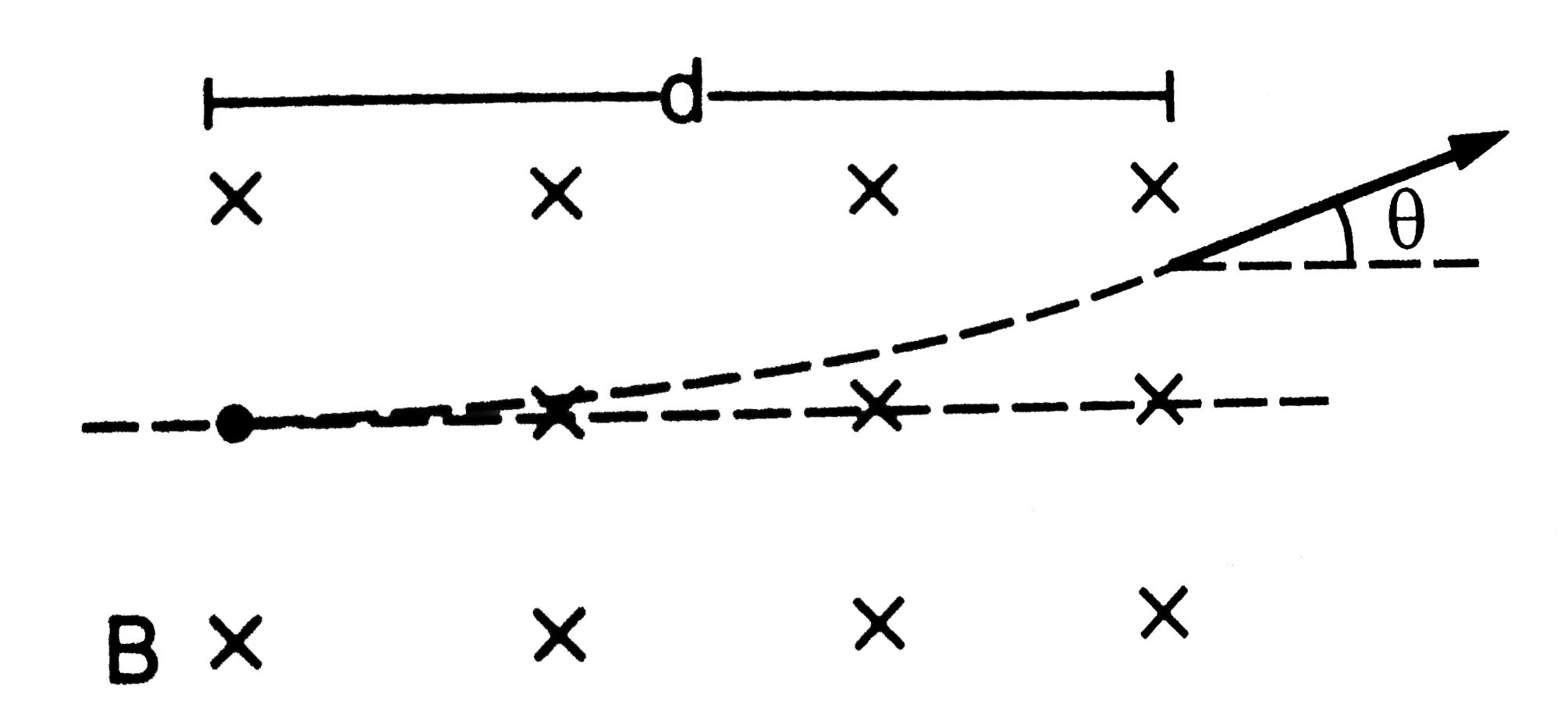A particle of mass m and charge q is thrown in a region where uniform gravitational field and electric field are present. The path of particle:
straight line
ellipse
parabola
circle
The correct Answer is:A, C
To determine the path of a particle of mass m and charge q thrown in a region where a uniform gravitational field and an electric field are present, we can analyze the forces acting on the particle.
1. Identify the Forces Acting on the Particle:
- The particle experiences two forces:
- The gravitational force Fg=mg acting downwards (where g is the acceleration due to gravity).
- The electric force Fe=qE acting in the direction of the electric field E (where E is the magnitude of the electric field).
2. Determine the Net Force:
- The net force Fnet acting on the particle can be expressed as the vector sum of the gravitational force and the electric force:
Fnet=Fe+Fg
- Depending on the orientation of the electric field with respect to the gravitational field, the net force will have a specific direction.
3. Analyze the Direction of the Forces:
- If the electric field is directed upwards and the gravitational field is directed downwards, the net force will be the difference between the two forces:
Fnet=qE−mg
- If qE>mg, the particle will accelerate upwards; if qE<mg, the particle will accelerate downwards.
4. Determine the Path of the Particle:
- Since the net force is constant (both mg and qE are constants), the particle will experience constant acceleration.
- According to Newton's first law, if a particle is subjected to a constant net force, it will move in a straight line.
5. Conclusion:
- Regardless of the configuration of the electric and gravitational fields, the particle will follow a straight-line trajectory due to the constant net force acting on it.
Final Answer:
The path of the particle will be a straight line.
- The particle experiences two forces:
- The gravitational force Fg=mg acting downwards (where g is the acceleration due to gravity).
- The electric force Fe=qE acting in the direction of the electric field E (where E is the magnitude of the electric field).
- The net force Fnet acting on the particle can be expressed as the vector sum of the gravitational force and the electric force:
Fnet=Fe+Fg
- Depending on the orientation of the electric field with respect to the gravitational field, the net force will have a specific direction.
- If the electric field is directed upwards and the gravitational field is directed downwards, the net force will be the difference between the two forces:
Fnet=qE−mg
- If qE>mg, the particle will accelerate upwards; if qE<mg, the particle will accelerate downwards.
- Since the net force is constant (both mg and qE are constants), the particle will experience constant acceleration.
- According to Newton's first law, if a particle is subjected to a constant net force, it will move in a straight line.
- Regardless of the configuration of the electric and gravitational fields, the particle will follow a straight-line trajectory due to the constant net force acting on it.
The path of the particle will be a straight line.
Topper's Solved these Questions
- MISCELLANEOUSBook:ALLENChapter:MISCELLANEOUSExercise:Exercise-03
Explore 1 Video
- MISCELLANEOUSBook:ALLENChapter:MISCELLANEOUSExercise:Exercise-04
Explore 1 Video
- MISCELLANEOUSBook:ALLENChapter:MISCELLANEOUSExercise:Exersice -05(B)
Explore 19 Videos
- KINEMATICS (MOTION ALONG A STRAIGHT LINE AND MOTION IN A PLANE)Book:ALLENChapter:KINEMATICS (MOTION ALONG A STRAIGHT LINE AND MOTION IN A PLANE)Exercise:BEGINNER S BOX-7
Explore 8 Videos
- PHYSICAL WORLD, UNITS AND DIMENSIONS & ERRORS IN MEASUREMENT Book:ALLENChapter:PHYSICAL WORLD, UNITS AND DIMENSIONS & ERRORS IN MEASUREMENT Exercise:EXERCISE-IV
Explore 8 Videos
Similar Questions
A particle of mass m and charge q is thrown from a point in space where uniform gravitational field & electric field are present.The particle

(1) may follow a straight line
( 2) may follow a circular path
( 3) may follow a parabolic apth
View SolutionA charged particle is at rest in the region where magnetic field and electric field are parallel. The particle will move in a
View SolutionIn a region where both non-zero uniform electric field and magnetic field coexist, the path of a charged particle
View SolutionA particle of mass .m. and charge q is placed at rest in a uniform electric field E and then released. The K.E. attained by the particle after moving a distance y is
View SolutionA particle of mass m and charge q is projected into a region having a perpendicular magnetic field B. Find the angle of deviation of the particle as it comes out of the magnetic field if ihe width d of the region is
2mvqB

View SolutionA charge particle of mass m and charge q enters in a region of uniform magnetic field as shown in figure.The magnitude of change in linear momentum due to magnetic field will be

View SolutionA particle of mass m and charge q is placed at rest in a uniform electric field E and then released, the kinetic energy attained by the particle after moving a distance y will be
View SolutionA charged particle of mass m and charge q is released from rest in an electric field of constant magnitude E. The kinetic energy of the particle after time t is
View SolutionA particle of mass m and charge q is projected into a region having a perpendicular magnetic field B. Find the angle of deviation fo the particle as it comes out of the magnetic field if the width d of the regions is very smaller then

View SolutionA particle of mass m and charge q is projected into a region having a perpendicular magnetic field B. Find the angle of deviation fo the particle as it comes out of the magnetic field if the width d of the regions is very smaller then

View Solution

